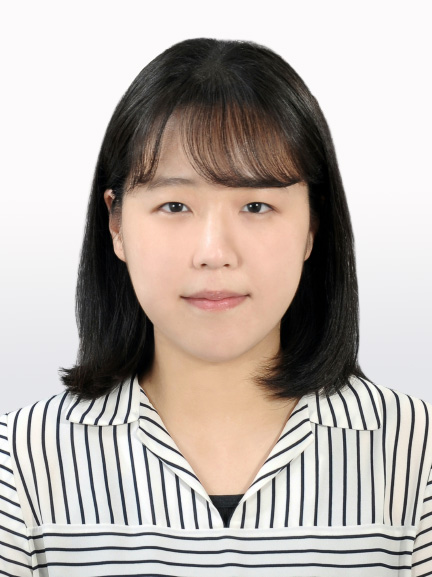Most Popular
Well-curated
-
1
Cimer down, design at Wappen, familiar space

-
2
Jazz with a view, fusion burgers and riot of colors at flower fest

-
3
Treats for esports fans, galleries and gingko trees at Samcheong-dong

-
4
Explore history of coffee in Korea, grab a book and savor Disney magic

-
5
Peaceful autumn with dumplings, flower farm, garden festival

[Well-curated] Eccentric art, 'hanji' mobiles and Christmas ornaments
By Park Ga-young, Hwang Dong-hee, Park YunaPublished : Dec. 1, 2023 - 09:01

Reflect at must-see MSCHF exhibition
Thought-provoking artworks by MSCHF, an art collective that refuses to be confined by gallery walls, are on show at Daelim Museum in Anguk-dong, Seoul.
Titled “Nothing Is Sacred,” the exhibition brings together 130 works by MSCHF including paintings, interactive games and fashion objects created by the group since 2016.
At a glance, the collective's pieces look like playful and funny graphic designs.
However, the works are designed to challenge our perceptions and ask questions about our social, economic and cultural realities, ranging from corporate greed to existential contemplation.

Some examples of pieces in the collection include Satan Shoes, Nike Air Max 97s embedded with a drop of blood, a painting of 183-centimeter-tall medical bills sold for the same amount as the billed amount to pay for medical care, and a $30,000 Damien Hirst painting chopped and sold separately at $480. Also on show is Andy Warhol's "Fairies,” originally priced at $20,000, of which 999 copies were made and sold for $250 apiece, including the original.
Cartoonishly oversized "Big Red Boots" and “The World's Most Expensive Bag,” a Louis Vuitton bag smaller than a grain of salt that was sold for $63,750 at auction are also on display.
Founded in 2019 by Gabrielle Whaley, the New York-based MSCHF introduces exclusive works every two weeks, spanning diverse genres such as art, fashion, technology and works that hold messages reflecting society.
The exhibition runs through March 31. A free guided tour is available Tuesdays to Fridays at 11 a.m., noon., 5 p.m. and 6 p.m., as well as on Saturdays, Sundays and holidays at 11 a.m. and noon. The tour lasts approximately 40 minutes. Ticket prices are 3,000 won for children, 5,000 won for teenagers and 17,000 won for adults.

Wish for longevity with ‘hanji’ mobile
The Hanji Culture and Industry Center in the Bukchon area of Jongno-gu, Seoul, offers a special hands-on experience program where visitors can work with “hanji,” traditional Korean paper made from mulberry bark.
After the image of a hanji mobile went viral online, the center introduced an updated mobile kit, designed with the motif of “sipjangsaeng,” representing the 10 symbols of longevity.
Visitors are given the kit along with instructions in Korean and English. An instructional video is also available. The hanji can be cut, folded and glued to create a mobile with elements representing the sun, mountains, the sea and land. The craft experience takes around 1 hour and 30 minutes to complete, though it may take longer if approached with meticulous attention.
The center recommends that children under 10 participate with a guardian. Sessions are limited to 6 participants per time slot, scheduled at 10 a.m., 2 p.m. and 5 p.m.
The program is free of charge, and reservations open twice a month, with the next opening on Dec. 9 at 4 p.m. for slots from Dec. 16-31. Only one mobile kit can be provided per reservation, although those accompanying are welcome to observe. Reservations operate on a first-come, first-served basis, but if there are cancellations, slots may open up and will be promptly updated.
In addition, the center offers a program where participants can create bookmarks, keychains or tea coasters using hanji. In the first-floor showroom, various household items made with hanji are on display, including hanji wallpaper, table pads, screens and stamps. The hanji samples on display can also be purchased at the center.
The center is open from 10 a.m. to 7 p.m. It is closed on Mondays.

Explore Seoul Express Bus Terminal's Christmas market
The time has come to set up a tree and hang up a holiday wreath as Christmas approaches. Whatever your Christmas decoration needs, you are likely to find what you are looking for at Seoul Express Bus Terminal’s wholesale flower market, which is connected to the Express Bus Terminal Station on Subway Lines No. 3, 7 and 9.
The flower market, located on the third floor of the bus terminal building for the Gyeongbu Line and Yeongdong Line, turns into a wholesale Christmas market with flower shops selling Christmas trees, lights, wreaths, ornaments, candles and a whole lot more. The market is considered one of the biggest markets for Christmas goods in Seoul.

As the market is filled with rows and rows of shops in a cramped space, it is recommended that visitors shop with few belongings so as to minimize congestion. The market is open from midnight to 6 p.m. and is closed on Sunday.
Behind the bus terminal building is Shinsegae Central City where a variety of restaurants and cafes are located.







![[Today’s K-pop] Blackpink’s Jennie, Lisa invited to Coachella as solo acts](http://res.heraldm.com/phpwas/restmb_idxmake.php?idx=644&simg=/content/image/2024/11/21/20241121050099_0.jpg&u=20241121172748)

















![[Today’s K-pop] Babymonster logs 100m views with ‘Drip’ music video](http://res.heraldm.com/phpwas/restmb_idxmake.php?idx=642&simg=/content/image/2024/11/22/20241122050051_0.jpg&u=20241122172213)